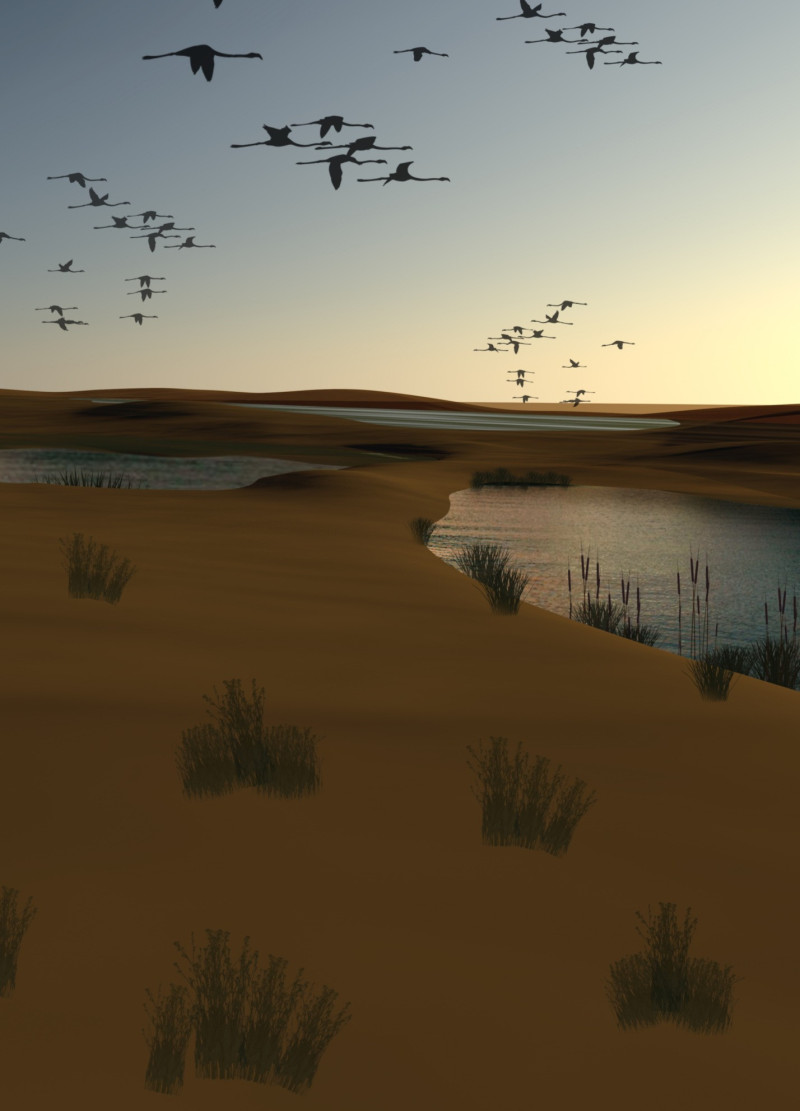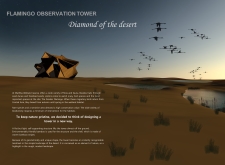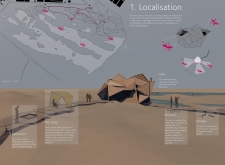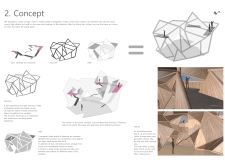5 key facts about this project
The Flamingo Observation Tower is located in the Al Wathba Wetland Reserve, an important habitat for the Greater Flamingo and various wildlife. It serves as an elevated point for visitors to observe and appreciate the natural landscape while ensuring minimal disruption to the environment. The design focuses on a minimalist approach, where the structure blends into the desert surroundings and promotes the principles of conservation and sustainability.
Design Concept
The vision behind the tower emphasizes a lightweight, flat, and self-supporting structure elevated above the ground. This design reduces soil stress, allowing the ecosystem to function naturally underneath. The geometric shape of the tower creates a noticeable landmark that contrasts with the flat desert landscape. The form invites exploration and serves as a meaningful addition to the wetland reserve.
Pathway Integration
The project includes a pathway that directs visitors through the wetland area. Made from single slabs, the path is accessible while keeping a low impact on the environment. Along the route, indentations reveal fossilized sands, encouraging visitors to interact with the geological features of the landscape. There are shaded rest areas where people can stop and learn more about the local plants and animals through informational panels.
Material Selection
Choosing materials for the tower reflects a dedication to sustainability. Bamboo is the main material used, known for its fast growth and durability. By selecting bamboo, the design reduces the overall environmental impact while maintaining structural support. The lightweight quality of bamboo aligns with the goal of minimizing stress on the soil while fitting well within the natural environment.
Interior Experience
Inside the observation tower, visitors find a space filled with varied shapes and light. Transparent elements provide protection from the harsh desert weather, helping to keep the interior comfortable. These elements also enhance visibility for observing the surrounding wetlands and help to lower noise, allowing for a peaceful experience that respects the local wildlife.






















































